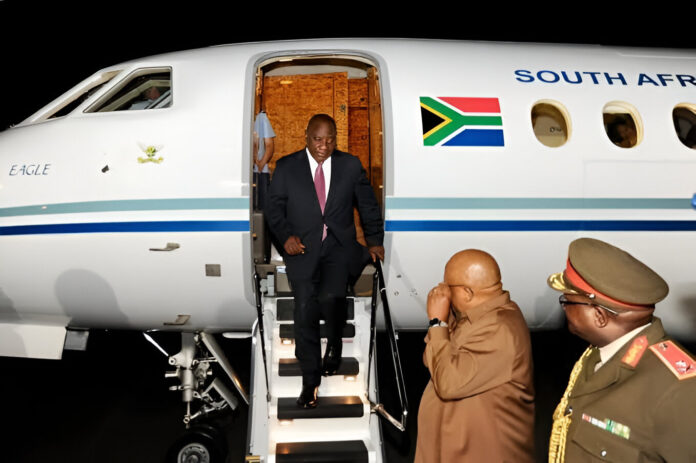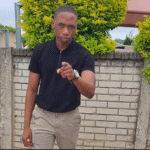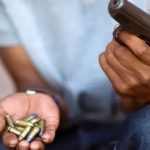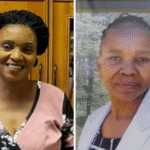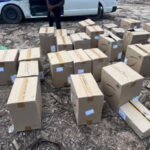PRETORIA – A crippling crisis within the South African Air Force (SAAF) has deepened, with revelations that President Cyril Ramaphosa has been flying on the presidential jet, Inkwazi, with potentially catastrophic engine defects since 2022. This alarming discovery comes amid a backdrop of grounded aircraft, struggling pilots, and a depleted budget, raising serious questions about South Africa's ability to defend its airspace and fulfil its international peacekeeping commitments.
An audit has recently revealed technical maintenance shortcomings in the presidential jet, Inkwazi, which could have led to engine failure at any moment. The findings included that an airworthiness directive from the original manufacturers of the Boeing Business Jet (BBJ) engines, issued in 2022, was apparently never executed. Airforce sources told City Press sister publication Rapport that this directive was akin to recalls issued by car manufacturers to resolve specific defects in certain models. The directive reportedly required the replacement of critical components in the gearboxes of the two engines on this particular aircraft model for safety reasons.
While the audit indicated the work was signed off as completed in 2023, an inspection of the gearboxes reportedly contradicted this claim. This implies that Ramaphosa has effectively been flying on a jet with unreliable engines since then.
The air force stated these deficiencies are now part of legal proceedings between the air force and South African Airways Technical (SAAT), which was previously responsible for maintenance.
In November of last year, an inspection group from the Civil Aviation Authority (CAA) prevented Inkwazi from further flights at the Waterkloof Air Force Base following the G20 summit in Brazil. This was due to certain technical documentation concerning the jet not being submitted when it was purchased in 2002.
The military announced this week the need to expand the VVIP fleet. Due to the “limitations” of the existing VVIP fleet, a strategic acquisition master plan is now being implemented to expand it with new aircraft, the military stated this week.
For the recent G7 summit, Ramaphosa travelled to Canada on a commercial flight. This was shortly after the audit highlighted the faults.
Adding to the woes, the air force’s budget for charter flights and maintenance has now been depleted, meaning Ramaphosa and other senior government officials will have to rely on commercial flights for the foreseeable future. When the VVIP squadron’s aircraft are unserviceable, it falls upon the air force to secure a charter aircraft for primary principals such as Ramaphosa. However, the budget – despite it only being the fourth month of the current financial year – is practically exhausted.
Historically, the air force has reallocated funds from other aircraft budgets to ensure the VVIP squadron remained operational. Due to budget cuts, no such reallocation is currently possible.
The air force’s financial woes have also grounded the rest of both the VVIP fleet and other larger fixed-wing aircraft.
Like all operators with aircraft landing at commercial airports locally and abroad, the air force must annually renew the licence for its Jeppesen onboard navigation systems. These systems are essential for VVIP aircraft, particularly for prescribed approach patterns at commercial airports. This constraint has led to impractical stop-gap measures, such as advising crews to fly below 5 400m – a solution fraught with turbulence and operational challenges, especially in adverse weather.
Military spokesperson Siphiwe Dlamini denied claims that the Jeppesen system is inactive, explaining that online subscriptions directly with navigation service providers were cheaper and swifter.
Dlamini assured that the air force continuously sought interim solutions for challenges involving manpower and aircraft. Despite the constraints, large sums have still been spent on overseas travel for senior air force officers.
Recent examples include:
- A nine-member delegation attending a five-day conference in China costing R800 000 (despite China covering hotel expenses);
- Nearly R470 000 spent on three senior officers to attend a five-day aviation symposium in Italy; and
- Six delegates travelling to a four-day meeting in Sweden at a total cost of R520 400.
The SAAF, once a symbol of regional military strength, is facing a crippling crisis that threatens its ability to defend the nation's airspace. Leaked internal SAAF documents paint a grim picture of grounded aircraft, struggling pilots, and a rapidly deteriorating combat readiness, raising serious questions about South Africa's ability to deter potential aerial threats.
News24 has obtained documents revealing that SAAF pilots and crews are struggling to log the minimum flying hours required to maintain their proficiency and retain their flying licences. This deficiency in aircrew currency is having a cascading effect, rendering key aircraft inoperable and leaving South Africa vulnerable to potential air incursions.
The documents highlight a particularly alarming situation with the SAAF's fighter jet capabilities. While the documents show only two Gripen fighter jets were available for combat operations at 2 Squadron in Makhado during the past six months, it also stated they were only "available 54%" of the time, as their combat readiness "varies".
In the absence of a fully operational fighter fleet and adequately trained pilots, South Africa would be forced to rely solely on land-based air defence systems to deter any potential air invasion of its borders. This reliance on a single layer of defence significantly weakens the country's overall security posture.
The Hawk fighter trainers, operated by 85 Squadron, also in Makhado, which is strategically located close to the country's northern borders with Mozambique, Zimbabwe and Botswana, and thus located to efficiently intercept incoming aircraft should there be any violation of the country's airspace.
The SAAF's woes extend beyond its fighter jets. The documents also reveal that a lone Rooivalk attack helicopter and a single Hercules C130 transporter plane were available between September 2024 and 7 March this year, the aircraft could not be operated due to what is known as "aircrew currencies".
Kobus Marais, a former MP who represented the DA on the portfolio committee and joint standing committee on defence since 2015, until his retirement last year, explained the critical importance of "aircrew currencies". "Aircrew currencies are the compliance requirements the crew must complete and pass to have the efficiencies and skills to fly our airframes in very specific conditions and circumstances," Marais said. "If they are not current, they can't fly the aircraft or can't serve as competent crew."
The SAAF itself acknowledges the extensive training required to produce qualified pilots. According to its website, it takes approximately 31 months of initial training to qualify pupil pilots, giving them around 210 flying hours on the Pilatus PC-7 training aircraft.
However, even the training fleet is suffering from neglect. Only two Pilatus PC-7 aircraft were available between September and the first week of March, a drastic reduction from the total fleet of 35 owned by the SAAF. In October 2023, then-defence minister Thandi Modise revealed that only six Pilatus aircraft were airworthy, with the rest grounded due to a lack of funds for spares and repairs.
Military analyst Helmoed-Römer Heitman stressed the importance of real-world flying experience for maintaining combat readiness. "The minimum flying hours are not just about flying the aircraft," Heitman said, adding "the fighter pilots have to keep current with using the weapons as well".
While the SAAF has simulators where a lot could be done to help keep the pilots current with certain aspects of flying, "the simulators cannot do the job for you. It [simulator] is a stepping stone to flying but cannot replace the [unavailable] aircraft", he added.
The SAAF's overall fleet numbers tell a stark tale of decline. The air force possesses a total of 11 Rooivalk helicopters and five Hercules C130s, but all are currently grounded due to a chronic lack of funding for essential spares and maintenance.
The single Rooivalk that was "available 30%" of the time during this period was operated by 16 Squadron and based at the Bloemspruit Air Force Base in Bloemfontein, according to the SAAF documents.
News24 also reported the only available Oryx helicopter had only returned to service during the third week of February this year. Sources said the helicopter was immediately dispatched to the DRC in a chartered cargo carrier in the first week of March, following battles in which 14 SANDF soldiers were killed when the M23 rebel forces captured swathes of territory in the North Kivu province from Congolese Armed Forces that were being assisted by South African, Malawian and Tanzanian forces in January. The helicopter remains at Lubumbashi airport, close to the Zambian border and far away from the battlefields of Goma and Sake in the eastern DRC, where more than 1 000 South African forces are stranded and surrounded by the M23 rebels.
The lack of air support has left South African troops vulnerable and hampered their ability to effectively carry out their mission in the DRC.
The grounding of the Hercules C130 transport aircraft is also having a dire impact on the SANDF's logistical capabilities. One of the two Hercules C130 transporters operated by 28 Squadron, based at Waterkloof Air Force Base in Pretoria, was "available 0%" in this period. "Aircrew currencies" was the specified reason for the grounding.
Due to the absence of its own aircraft, the SAAF had to wait a full month before it could secure a chartered foreign plane to evacuate wounded soldiers from the DRC to be admitted to 1 Military Hospital in Pretoria. The remains of the 14 fallen soldiers were flown home for burial two weeks after they died in battle.
A single CASA 212 Aviocar light transport aircraft at 44 Squadron, also based at Waterkloof, was "available 12.5%" of the time. The document shows the SAAF should operate two such aircraft from this base.
The root cause of the SAAF's woes is a chronic lack of funding. As Marais put it, "If the aircraft are not available, the budget is not available for the required flying hours, a qualified pilot can't fly. They need minimum qualification and competency accreditation or permits to do so."
It was Marais who pressured Thandi Modise, then-defence minister, to reveal to Parliament in October 2023 the dire straits into which the SAAF had plunged, with about 330 of its military aircraft grounded by lack of spares and maintenance. Included in the grounded aircraft are key primary mission equipment such as the 24 Gripen fighter jets that are required to protect the integrity of South African airspace. Only three out of 24 Hawk fighter jet trainers are available to keep pilots flying.
The SAAF's decline raises serious questions about South Africa's commitment to its own defence and its ability to project power and maintain stability in the region. Without a significant injection of funds and a renewed focus on maintenance and training, the SAAF risks becoming a shadow of its former self, leaving South Africa's skies undefended and its soldiers vulnerable.
On Monday night, News24 sent an enquiry regarding the status of pilots to the SA National Defence Force (SANDF), which spokesperson Siphiwe Dlamini acknowledged. The response will be added once received.

Follow Us on Twitter

